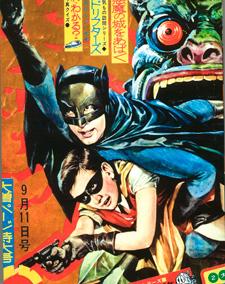If you don’t immediately recognize the name Chip Kidd then you almost certainly know the man’s work. When the history of 21st-century design is written a chapter will certainly be devoted to him: Working within what is ultimately a miniscule niche of the graphic design world he has managed not only to make a name for himself but he, along with a few others, has managed to bring graphic design into the larger public imagination.
Kidd is a book jacket designer and you have seen the products of his labours. His covers grace the books of David Sedaris, Armistead Maupin, Augusten Burroughs, Gore Vidal and many, many others, and are instantly recognizable for their boldness, their cleverness and their graphic simplicity. To wit: the silhouette of a Tyrannosaurus Rex skeleton that made the cover of Jurassic Park and proved so iconic that it became the subsequent movie’s visual identity? Kidd’s claim to fame. Burrough’s substance-abuse memoir, Dry, with its leaky type running down the page? Vintage Kidd. Sedaris’s first book, Naked, with a pair of boxer shorts on a jacket-flap, neatly concealing an X-ray of a pubic bone? Kidd par excellence. His book jacket work has earned him such success that authors (with enough cachet, that is) will include in their publishing contracts that Kidd (and Kidd only) design their covers.
He is also something of a polymath, having written two books, Cheese Monkeys and The Learners. Both are crypto-autobio-roman-à-clefs about a young man named Happy. In Cheese Monkeys, a coming-of-age tale, he unwittingly meets his mentor and discovers his calling (graphic design, natch) and then, in The Learners, navigates the treacherous world of first jobs and psychosocial experimentation (of course, Kidd designed both books).
Kidd is also an avid collector and a comic-book nut, which are the reasons for his upcoming visit to Toronto, where he will be interviewed as part of the International Festival of Authors. His latest project is the result of 10 years of research and online purchasing, a 300-odd-page collection of comic books and ephemera called Bat-Manga! The Secret History of Batman in Japan. In outlining the origins of the book, Kidd points to developments in Japan. “The first origin is, obviously, when these comic books came into existence in 1966. The Batman TV show was hitting globally and the Japanese did something that no other country did. They contacted DC comics and they licensed the right to draw, write and publish their own Batman stories. It wasn’t a bootleg thing.”
Bat-Manga! is a collection of these Japanese Batman manga comics, toys and posters. Kidd very lovingly reproduces this work, illustrated by manga prodigy Jiro Kuwara (now in his early 70s, Kuwara began professional cartooning when he was 13, and created one of manga’s most popular heroes, 8-Man). But this particular series never really took off. “This went on for literally one year,” says Kidd. “They ran these stories, they came and went, and that was that. They were never reprinted, they were never collected, they were never translated.”
Kidd was initially alerted to the existence of these comics by his friend, the illustrator David Mazzuchelli, who discovered them while on a fellowship in Japan in the 1990s. “[He] is a good friend of mine, and he told me about it, he told me about the phenomenon. And basically, then, thanks to the internet and thanks to eBay, I hooked up with a collector outside of Chicago, this guy named Saul Ferris. He’s the main source for finding this stuff. There would be no book without him.” Kidd also was completely devoted to this source material, warts and all. “We photographed these things directly from the comic book. And the printing varies wildly, from very slick to downright lousy. I didn’t want to clean it up. So it does really feel like you’re reading this 40-year-old comic from Japan.”
There is a great deal of care taken in the layout and construction of the book. First of all, like any proper manga, it reads from right to left. The text bubbles and panels are translated, and instead of hand-calligraphing the text (which would be inappropriate, as the text in manga is typeset), he laid it out in a bold, simple font named (appropriately enough) Gotham. So the book is the result not just of a Batman fan, but of someone whose fandom is part and parcel of their métier. After all, comic books share a great deal in common with book jackets: both use words and image to convey the sense of a narrative. “I think [comic fandom and design] is all wrapped up for me,” says Kidd. “It’s been pointed out to me that a lot of my graphic design style is actually affected by the comics because I often compartmentalize typography and image, which I actually think is a really interesting observation.”

 Why you can trust Xtra
Why you can trust Xtra


